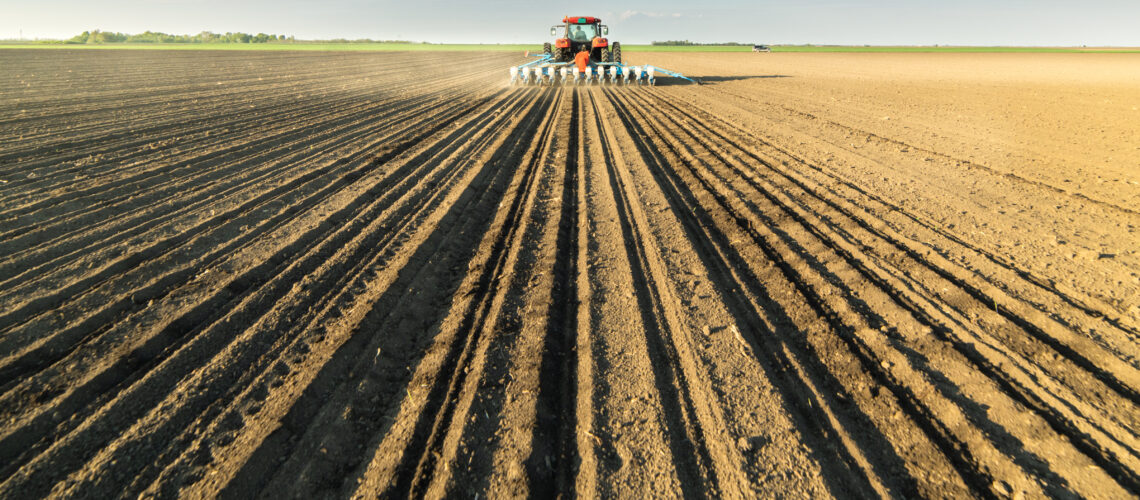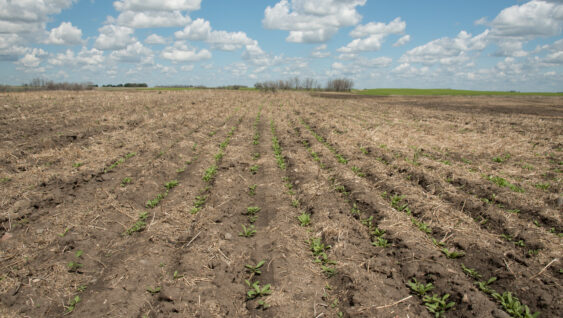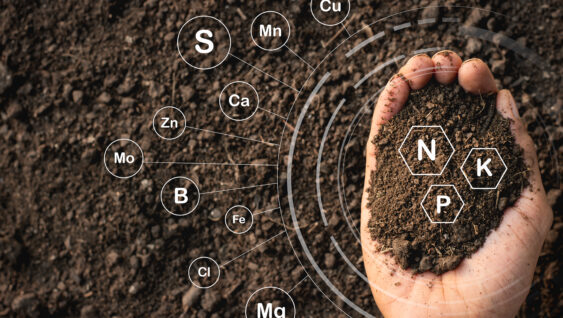How Do Tillage Systems Affect Nutrient Management?

In this article, we address how different tillage systems impact nutrient management.
Across the US, there are various types of tillage systems utilized by farmers. The ability to perform tillage to incorporate residue usually is driven by precipitation and cropping system (more diverse crop rotations generally require less tillage – but not always). We can define these tillage systems based upon how much residue is maintained on the soil surface which impacts soil and soil-water.
Defining Tillage Systems
For the sake of this discussion, we are going to define conservation tillage very generally using the Conservation Technology Information Center (CTIC) definition. Conservation tillage is defined as a tillage system that maintains at least 30% residue on the soil surface. Obviously, there are some conservation tillage approaches that maintain considerably more. Conversely, conventional tillage systems will be systems that maintain less than 30% residue on the soil surface.
Generally, conservation tillage practices reduce the potential for soil erosion and increase plant-available water by increasing infiltration rates over time and decreasing evaporative losses. Conservational tillage approaches also keep soil temperatures cooler early in the spring.
Tillage Effects on Soil Nutrients
There is no question that various tillage systems excel in different environments (soil texture, soil drainage, or crop rotation) and that nutrient management differs based on the crop being grown. However, there are some basic soil fertility concepts to know for conservation and conventional tillage systems.
Conservational tillage systems tend to be more limited in fertilizer application methods compared to conventional tillage. Since the main idea behind conservation is to leave crop residue and reduce soil and soil-water losses, fertilizer application methods are limited to those resulting in minimal soil disturbance.
Therefore, broadcast applications are generally made using dry, granulated sources — urea, monoammonium phosphate (MAP), diammonium phosphate (DAP), and potash (KCL). Conventional tillage systems generally can have more flexibility in the fertilizer sources that are utilized, such as liquid — ammonium polyphosphate (APP, 10-34-0).
Nitrogen
The presence or absence of crop residue at the soil surface can dramatically impact how nitrogen should be managed (especially for urea-based fertilizers). Surface applications of urea-based fertilizers to soils with crop residue should be avoided to maximize availability of nitrogen for the crop being fertilized. Crop residue contains urease (the enzyme responsible for breaking down urea) and applications of urea onto the residue will increase the potential loss of ammonia via volatilization. Injection is a much better option for conservation tillage systems, or the use of a urease inhibitor should be considered.
Conventional tillage systems may not be ideal for surface applications either, but the risk of potential ammonia volatilization is lower. If tillage is expected to occur quickly after surface application, the loss potential of ammonia is negligible.
For either tillage approach, coulter injection or direct injection is a good option for application. Even when fertilizer is injected into high residual tillage systems — no-tillage or reduced tillage — agronomic benefits from the use of a urease inhibitor can still occur.
Potassium
Since there are no known environmental consequences mandating K fertilizer application, farmers typically apply KCL as a surface broadcast application. The amount of K removed in the grain is relatively small compared to the amount taken up and left in the crop residue. Without incorporation of residue, K concentrations can be highest on the soil surface and in the crop row — K is leached from stalks as the crop dies.
The heavy residue left on the soil surface in conservation systems usually results in higher soil moisture and lower soil temperatures in the spring. Therefore, reduced soil K availability and restricted root growth. In conventional tillage systems, soil can dry out too quickly leading to the reduction of plant K uptake due to K fixation of soil high in vermiculite clays.
Phosphorus
Since P does not have gaseous state, no gas losses would be expected from surface applications without incorporation as with nitrogen. However, surface applications of P without incorporation can lead to runoff losses. Therefore, applications of P below the soil surface may result in decreased P surface runoff.
Specifically, P is immobile in soil and, therefore, is relatively limited to the area of soil that is fertilized.
With some minimal tillage systems, such as strip-tillage, the option of deep banding fertilizer can be available. This management process is growing in popularity because these systems allow for fertilizer application (fall or spring) directly below the plant with the benefit of some conservation tillage. Both liquid and granular fertilizer products can be utilized in strip tillage.
Low temperatures in spring can also have a negative effect on germination, root development and growth, therefore nutrient acquisition may be an issue. Specifically, P deficiency is most common in crops grown with low soil temperatures as P is most dependent on diffusion for movement to the root. The most common way to address this issue is to use some type of liquid starter, such as 2 inches to the side of the seed and 2 inches below, surface dribble, or in-furrow popup. These starter fertilizer applications allow for readily available P close to the plant to aid in root development in seedlings. In general, crops grown in conventional tillage systems are more likely to respond to plant P (starter) application.
Conclusion, there is no one-size-fits-all system that is ideal for all environments. However, by understanding the basic chemical reactions in soils, farmers can make better decisions for nutrient management in various tillage systems.


